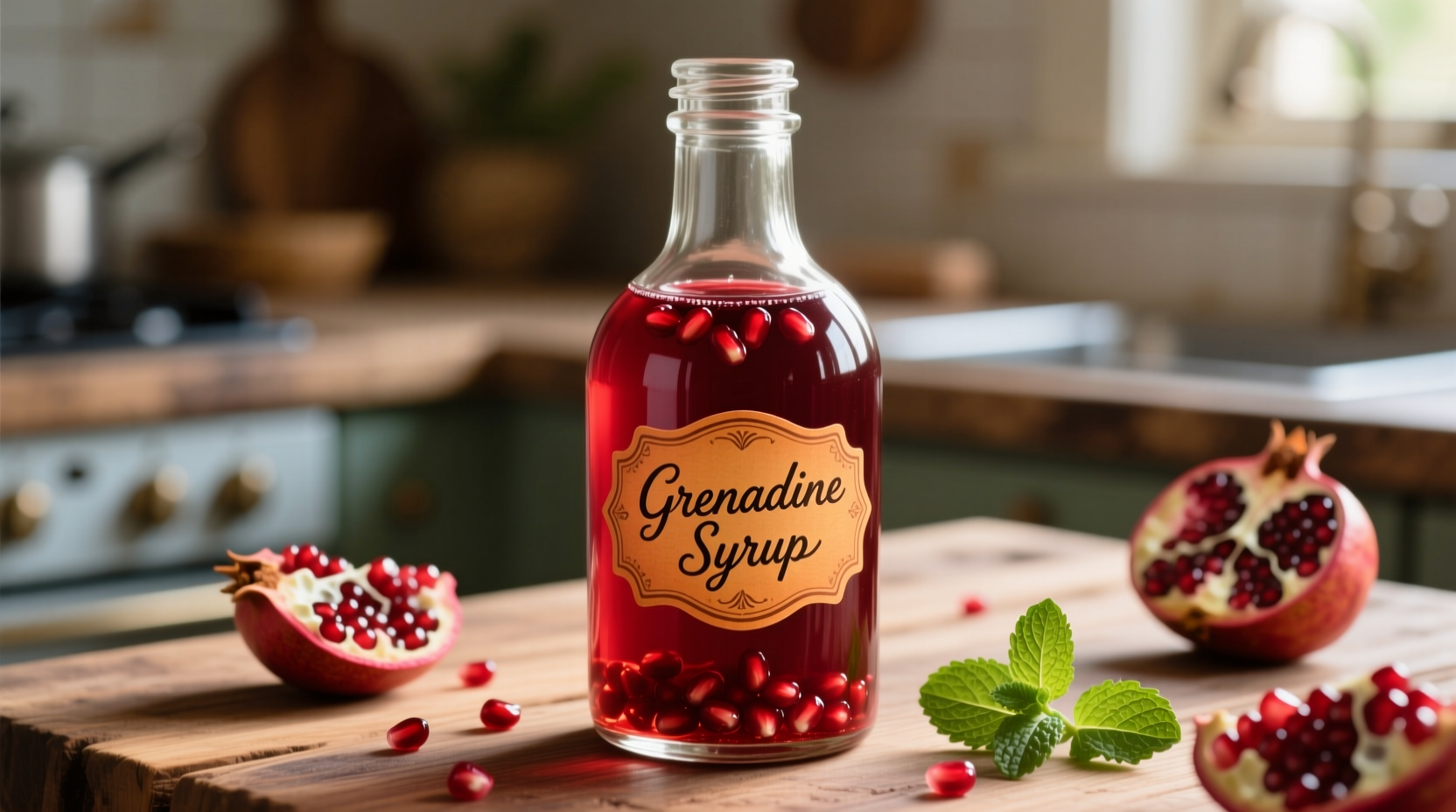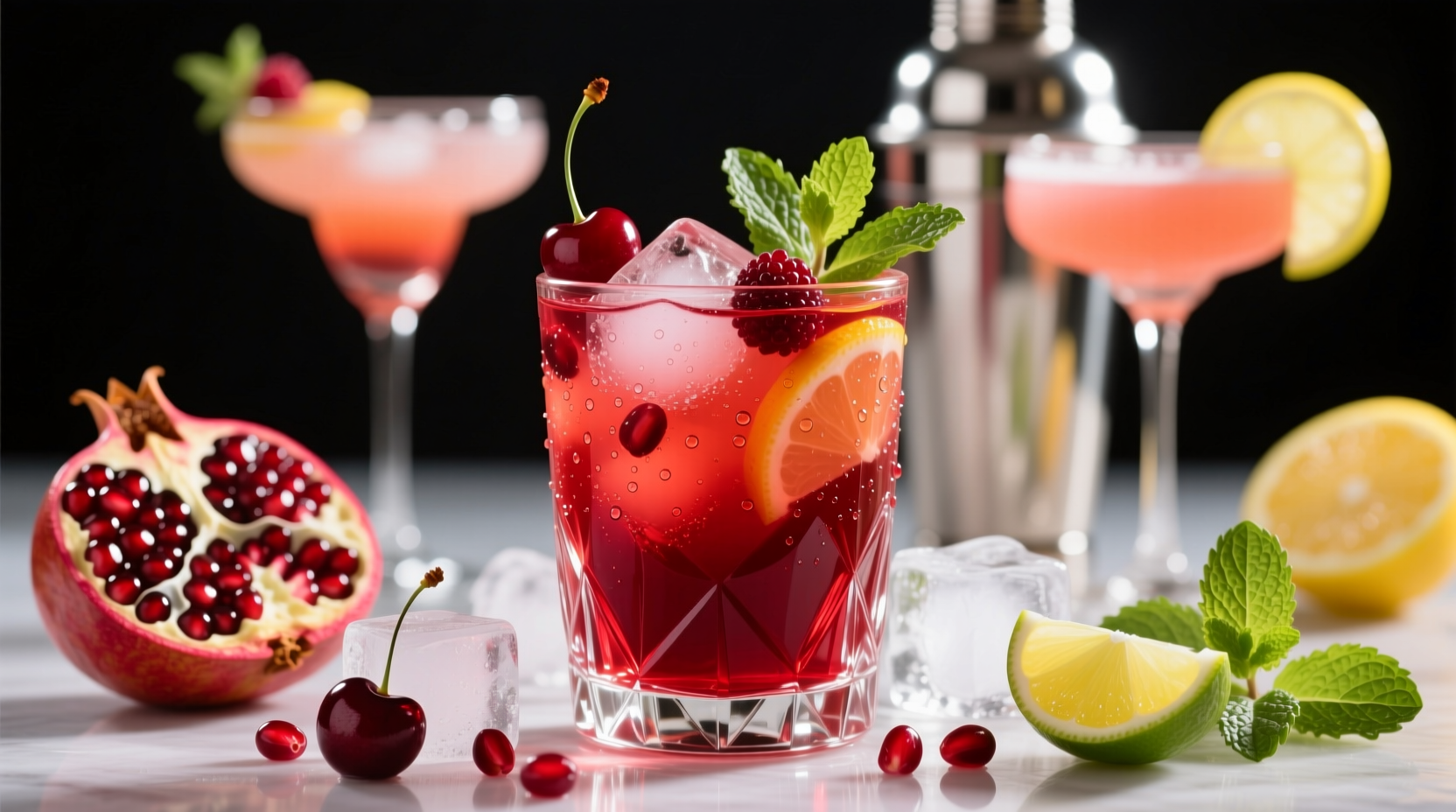When you shake a classic Tequila Sunrise or Shirley Temple, that vibrant red liquid transforming your drink is grenadine syrup. But what exactly does this cocktail staple taste like? The truth might surprise you. While traditional grenadine features genuine pomegranate essence with its distinctive sweet-tart complexity, 95% of supermarket bottles contain little to no actual pomegranate. Instead, they rely on artificial flavors, sugar, and red dye to create that familiar cherry-like sweetness that dominates modern cocktails.
The Pomegranate Paradox: What Grenadine Should Taste Like
True grenadine (from the French word grenade, meaning pomegranate) originated in Middle Eastern and Mediterranean cultures where artisans simmered pomegranate juice with sugar to create a shelf-stable syrup. This traditional version offers:
- A bright, tart acidity that balances the sweetness
- Complex berry notes with subtle floral undertones
- Earthy, wine-like depth from natural tannins
- No cloying artificial aftertaste
"Authentic grenadine should taste like concentrated pomegranate molasses with balanced sweetness," explains Antonio Rodriguez, culinary expert specializing in flavor chemistry. "The best versions showcase the fruit's natural complexity rather than overwhelming sugar and artificial flavors."
Grenadine Evolution: From Traditional to Modern
Understanding grenadine's flavor requires examining its historical transformation. This timeline reveals why most people's perception of "grenadine flavor" differs significantly from its origins:
| Era | Ingredients | Flavor Profile | Common Uses |
|---|---|---|---|
| Pre-1900s | Pomegranate juice, sugar | Bright tartness, complex berry notes, floral hints | Medicinal tonics, regional beverages |
| 1920s-1950s | Pomegranate concentrate, sugar, citric acid | More consistent tartness, reduced complexity | Classic cocktails (Jack Rose, Singapore Sling) |
| 1960s-Present | High-fructose corn syrup, artificial flavors, red dye #40 | Overwhelming sweetness, cherry-like artificial notes | Mass-market cocktails, non-alcoholic drinks |
Decoding Modern Grenadine Flavor Profiles
Today's grenadine exists in three distinct categories, each with characteristic flavor signatures:
Commercial Mass-Market Grenadine
Found in nearly every supermarket, these versions (like Rose's and Lea & Perrins) typically contain:
- High-fructose corn syrup (60-70% of content)
- Water
- Less than 2% natural flavors
- Red dye #40
- Citric acid
The resulting flavor is predominantly sweet with artificial cherry or berry notes and minimal tartness. Food science research from the Culinary Institute of America confirms these versions lack the nuanced complexity of pomegranate, instead creating a generic "red fruit" profile through flavor chemistry.
Craft Cocktail Grenadine
Higher-end brands (Small Hand Foods, The Bitter Truth) have revived traditional methods with:
- Real pomegranate juice (40-60%)
- Cane sugar
- Natural pomegranate flavor
- No artificial colors
These deliver noticeably brighter acidity, subtle tannins, and authentic pomegranate character. Mixologists prefer them for complex cocktails where flavor integrity matters.
Homemade Grenadine
The gold standard for flavor authenticity requires:
- Fresh pomegranate juice (strained)
- Equal parts sugar
- Lemon juice (for pH balance)
- Optional: orange flower water or pomegranate molasses
When made properly, homemade grenadine showcases the fruit's natural complexity with floral notes, balanced sweetness, and refreshing tartness that commercial versions can't replicate.

Why Flavor Matters: Grenadine in Cocktails
The flavor profile directly impacts cocktail quality. Mass-market grenadine's excessive sweetness and artificial notes:
- Overpowers delicate spirits in classics like the Tequila Sunrise
- Creates unbalanced sweetness in tiki drinks
- Lacks the acidity needed to brighten cocktails
Conversely, authentic grenadine provides the crucial sweet-tart balance that defines properly crafted cocktails. "The acidity in real grenadine acts like citrus in a cocktail," Rodriguez explains, "providing structure and preventing drinks from tasting flat or cloying."
Common Flavor Misconceptions
Several myths persist about grenadine's flavor:
- Myth: Grenadine tastes like cherries
Reality: The artificial versions mimic cherry flavor, but authentic grenadine showcases pomegranate's unique profile - Myth: All grenadine is red because of pomegranates
Reality: Natural pomegranate syrup ranges from deep ruby to burgundy; bright red indicates artificial coloring - Myth: Grenadine is just sweet syrup
Reality: Quality versions provide essential acidity and complexity, not just sweetness
Choosing Grenadine for Optimal Flavor
When selecting grenadine, check these flavor indicators:
- Color: Deep ruby (not neon red) suggests less artificial coloring
- Ingredients: Pomegranate juice should appear first or second on the list
- Texture: Authentic versions have slight viscosity from natural pectin
- Taste test: Should finish with tartness, not just sweetness
For home bartenders, Rodriguez recommends: "Start with a small batch of homemade grenadine using 1 cup fresh pomegranate juice and 1 cup sugar. Simmer gently for 10 minutes, then cool. You'll immediately notice the difference in both flavor and cocktail balance."
Practical Flavor Applications Beyond Cocktails
Understanding grenadine's true flavor profile opens creative culinary possibilities:
- Marinades: The acidity tenderizes meats while adding subtle fruit notes
- Desserts: Drizzle over panna cotta or ice cream for sophisticated sweetness
- Salad dressings: Whisk with olive oil and vinegar for fruit-forward vinaigrettes
- Glazes: Brush on roasted vegetables for complex sweet-tart finish
Remember that authentic grenadine's flavor works best when it can shine—avoid pairing with overly sweet ingredients that mask its nuanced profile.
FAQs About Grenadine Flavor
Is grenadine syrup actually pomegranate flavor?
Traditional grenadine is made from pomegranate juice and sugar, delivering authentic pomegranate flavor. However, most commercial versions contain less than 2% real pomegranate, relying instead on artificial flavors that create a generic cherry-like sweetness rather than true pomegranate character.
Why does store-bought grenadine taste different from homemade?
Commercial grenadine typically uses high-fructose corn syrup, artificial flavors, and red dye #40 instead of real pomegranate juice. This creates an overly sweet, one-dimensional flavor profile. Homemade versions using fresh pomegranate juice deliver the complex sweet-tart balance and subtle floral notes characteristic of authentic grenadine.
What does real pomegranate grenadine taste like?
Authentic pomegranate grenadine offers a complex flavor profile with bright tartness balanced by natural sweetness, subtle floral notes, and gentle tannins. It should finish with refreshing acidity rather than cloying sweetness, showcasing the fruit's natural complexity without artificial aftertastes.
How can I tell if grenadine contains real pomegranate?
Check the ingredient list for pomegranate juice as the first or second ingredient. Authentic versions typically have deep ruby coloring (not neon red), moderate viscosity, and a flavor that finishes with tartness rather than pure sweetness. Higher-quality brands like Small Hand Foods or The Bitter Truth specify real pomegranate content on their labels.
Does grenadine flavor change over time?
Yes, grenadine's flavor degrades over time. Commercial versions may develop off-flavors as artificial components separate. Homemade grenadine maintains best flavor for 2-3 weeks refrigerated. Properly stored, quality grenadine should retain its sweet-tart balance, while degraded versions become overly sweet as acidity diminishes.











 浙公网安备
33010002000092号
浙公网安备
33010002000092号 浙B2-20120091-4
浙B2-20120091-4